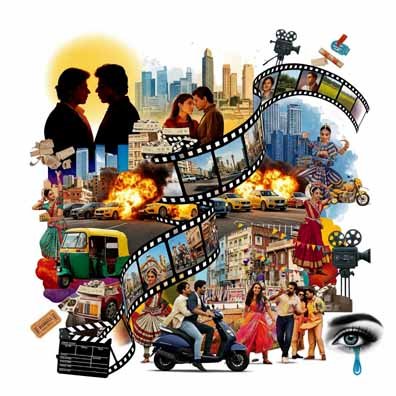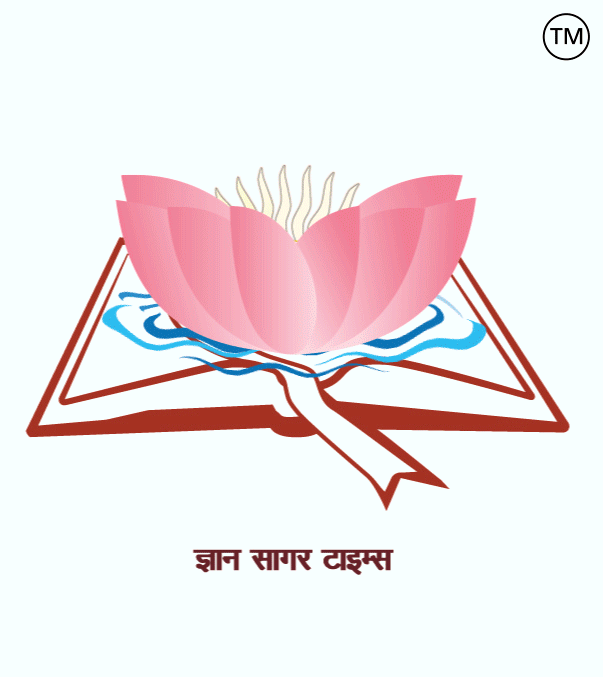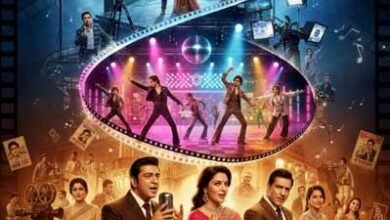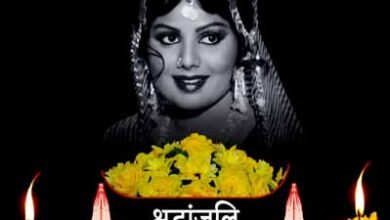
सिनेमा अबतक…
सिनेमा केवल मनोरंजन नहीं है – यह मानव अनुभव का प्रतिबिंब है. सिनेमा की शुरुआत मौन चित्रों से हुई, जहाँ भावनाएँ चेहरे और संगीत से व्यक्त होती थीं. सिनेमा का विस्तार सदियों से होता रहा है. हम सिनेमा में हर वह चीज देखते हैं, जो हमारे आसपास घटित होती है – जैसे-जैसे प्रौद्योगिकी और तकनीकी का विस्तार हुआ, वैसे-वैसे सिनेमा का भी विकास हुआ.
भारतीय सिनेमा की बात करें तो इसका श्रेय दादासाहेब फाल्के को जाता है, जिन्हें भारतीय सिनेमा का जनक भी कहा जाता है. उन्होंने राजा हरिश्चंद्र नामक पहली पूर्ण-लंबी फीचर फिल्म का निर्माण किया, जो वर्ष 1913 में प्रदर्शित हुई थी. यह फिल्म मूक सिनेमा के युग की शुरुआत थी, जिसमें संवादों की जगह केवल दृश्यों और संगीत का प्रयोग किया जाता था.
शुरुआती दौर की फिल्मों में कहानी को समझने के लिए स्क्रीन पर टेक्स्ट कार्ड्स का प्रयोग किया जाता था. इस समय की प्रमुख फिल्मों में दादासाहेब फाल्के की ‘लंका दहन’ और बाबूराव पेंटर की ‘सावकारी पाश’ शामिल हैं. उसके बाद सिनेमा में एक क्रांतिकारी बदलाव तब आया, जब भारत की पहली बोलती फिल्म ‘आलम आरा’ वर्ष 1931 में रिलीज़ हुई थी. जिसका निर्देशन अर्देशिर ईरानी ने किया था. इस फिल्म की सफलता ने अन्य फिल्म निर्माताओं को भी बोलती फिल्में बनाने के लिए प्रेरित किया.
वर्ष 1940- 60 का वो दौर, जिसे भारतीय सिनेमा का स्वर्ण युग माना जाता है. इस दौर में कलात्मक और व्यावसायिक, दोनों तरह की बेहतरीन फिल्में बनीं. गुरु दत्त, बिमल रॉय, राज कपूर, और महबूब खान जैसे महान फिल्मकारों ने ‘प्यासा,’ ‘मदर इंडिया,’ ‘आवारा,’ और ‘दो बीघा जमीन’ जैसी कालजयी फिल्में बनाईं, जिन्होंने समाज की वास्तविकताओं और मानवीय भावनाओं को गहराई से दर्शाया.
वर्ष 1960-70 का के दौर में समांतर सिनेमा को बढ़ावा दिया. इस दौर में सत्यजीत रे, मृणाल सेन, और ऋत्विक घटक जैसे निर्देशकों ने फिल्मों ने व्यावसायिक सफलता की बजाय सामाजिक संदेशों और यथार्थवादी कहानियों पर जोर दिया. बताते चलें कि, भारत की पहली रंगीन फिल्म थी ‘किसान कन्या’ (1937). वर्ष 1950 के दशक के बाद रंगीन फिल्मों का व्यापक चलन शुरू हुआ था. ‘मुगल-ए-आजम’ और ‘जॉनी मेरा नाम’ जैसी फिल्मों ने रंगीन सिनेमा को लोकप्रिय बनाया.
वर्तमान समय में सिनेमा पूरी तरह से डिजिटल हो चुका है. फिल्मों की शूटिंग, संपादन और प्रदर्शन अब डिजिटल प्रारूप में होते हैं. OTT (ओवर-द-टॉप) प्लेटफॉर्म, जैसे कि नेटफ्लिक्स और अमेज़ॅन प्राइम, ने सिनेमा देखने के तरीके को बदल दिया है. लोग अब घर बैठे ही अपनी पसंद की फिल्में और वेब सीरीज देख सकते हैं.
वर्तमान समय में भारतीय सिनेमा सिर्फ मनोरंजन का साधन नहीं रहा, बल्कि यह एक सशक्त माध्यम बन गया है, जो सामाजिक और राजनीतिक मुद्दों पर अपनी बात रखता है. भविष्य में सिनेमा आर्टिफिशियल इंटेलिजेंस (AI) और वर्चुअल रियलिटी (VR) जैसी नई तकनीकों के साथ और भी अधिक विकसित होगा. सिनेमा का यह सफर दिखाता है कि कैसे एक मूक कला ने एक जीवंत, शक्तिशाली और प्रभावशाली माध्यम का रूप ले लिया है.
=========== =========== ============
Cinema till date…

Cinema is not just entertainment—it is a reflection of the human experience. Cinema began with silent pictures, where emotions were conveyed through facial expressions and music. Cinema has evolved over the centuries. We see everything that happens around us in cinema, as technology and techniques expanded, so did cinema.
When it comes to Indian cinema, the credit goes to Dadasaheb Phalke, often referred to as the father of Indian cinema. He produced the first full-length feature film called Raja Harishchandra, which was released in the year 1913. This film was the beginning of the era of silent cinema, in which only visuals and music were used instead of dialogue.
Early films used text cards on the screen to understand the story. Prominent films of this period include ‘Lanka Dahan’ by Dadasaheb Phalke and ‘Saavkari Paash’ by Baburao Painter. After that, a revolutionary change came in cinema when India’s first talking film, ‘Alam Ara’, was released in the year 1931. It was directed by Ardeshir Irani. The success of this film inspired other filmmakers to make talking films as well.
The period of 1940-60 is considered the golden age of Indian cinema. In this period, both artistic and commercially excellent films were made. Great filmmakers like Guru Dutt, Bimal Roy, Raj Kapoor, and Mehboob Khan made classic films like ‘Pyaasa’, ‘Mother India’, ‘Awaara’, and ‘Do Bigha Zareen’, which deeply depicted the realities of society and human emotions.
The period of 1960-70 promoted parallel cinema. In this period, films made by directors like Satyajit Ray, Mrinal Sen, and Ritwik Ghatak emphasized social messages and realistic stories rather than commercial success. Let us tell you that India’s first colour film was ‘Kisan Kanya’ (1937). The widespread trend of colour films started after the 1950s. Films like ‘Mughal-e-Azam’ and ‘Johnny Mera Naam’ made colour cinema popular.
Cinema has become completely digital in the present time. Films are now shot, edited and displayed in digital format. OTT (over-the-top) platforms, such as Netflix and Amazon Prime, have changed the way cinema is watched. People can now watch their favourite movies and web series from home.
At present, Indian cinema is not just a means of entertainment, but it has become a powerful medium, which puts its point on social and political issues. In the future, cinema will develop even more with new technologies like Artificial Intelligence (AI) and Virtual Reality (VR). This journey of cinema shows how a silent art has taken the form of a vibrant, powerful and influential medium.





